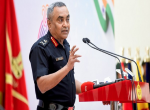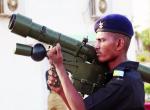The Indian security establishment was fiercely criticized both domestically and internationally for its tactical response to the 26/11 attacks. Some of this criticism was justified, while some was apparently motivated by a deliberate effort on the part of foreign powers to deflect attention from the Pakistani origins of the attack. As subsequent disclosures by Wikileaks have revealed, the United States and United Kingdom, together with their traditional intelligence partners in the ‘Anglosphere’ – Australia, New Zealand and Canada – formed a diplomatic cabal while the attacks were still ongoing, to devise a propaganda strategy that would protect Pakistan from India’s legitimate anger.1
One aspect of this strategy seems to have been a concerted media campaign to debase the professional reputation and track record of Indian security and intelligence services. It was implied that India bore more responsibility for having allowed the attacks to occur on its soil, than Pakistan did for having allowed them to be planned, financed and rehearsed on its territory. Thus, the Indians were projected as having been more incompetent than the Pakistanis had been treacherous. To this day, perceptions of 26/11 are dominated by memories of police confusion and military slowness, with a degree of personal incompetence also attributed to national and state-level politicians.
In all this, clinical analyses of the attacks have been confined to a handful of experts within the Indian strategic community, and to Special Weapons and Tactics (SWAT) units in the West. Those Western scholars who took the trouble to study the 26/11 attacks in depth, have offered valuable and valid criticism of the Indian security response. They have also had the humility to acknowledge that the tactical challenges posed by such attacks are of an unprecedented nature, and that Western SWAT capabilities have fallen behind the threat curve.2 Mumbai 2008 was a wake-up call about the extent of their own vulnerability, and it triggered a frantic search for a new tactical concept.
This article will explain what was ‘new’ about the 26/11 attacks from a tactical incident response perspective. It shall suggest that the current SWAT model which India has copied from the West is unsuited to the task of combating suicidal or ‘fidayeen’ terrorism. This model is optimized for challenges set in the 1970s. It is meant to provide a ‘one-size-fits-all’ template for coping with a dual-faceted threat: accidental as well as deliberate hostage-taking, and its tenets are more inclined towards resolving the former than the latter. In the forty years since, terrorists have adapted to the challenge posed by SWAT units and developed a concept of suicidal operations. These operations are fast-moving and fluid, and need to be countered through systemic changes.
The Myth of a ‘Reverse Stockholm Syndrome’
Readers of this article would be familiar with the term ‘Stockholm Syndrome’. It connotes a situation wherein hostages gradually begin to empathize and identify with their captors, since both are subject to prolonged confinement: the hostages are unable to move within the limited space that they share with their captors, while the captors themselves cannot leave that space because of police encirclement. Over a period of time, both parties see themselves and each other as innocent victims, who must set aside their differences and pull together in order to survive their common ordeal. At least, that is what hostage rescue theorists have long believed to be the case.
The Stockholm Syndrome in its truest sense is assumed to be bi-directional. Hostages begin to rationalize the criminal actions of their tormentors, while the tormentors’ willingness to do the hostages harm is weakened as a result of prolonged association. Thus, the Stockholm Syndrome presages that hostages will try to shield their captors in the event of a SWAT assault, while hostage-takers will momentarily hesitate about harming their victims during that same assault. To a large extent, current SWAT doctrine has been built around the latter assumption in particular – that a reverse flow of empathy from captor to hostage will emerge from a lengthy siege.
This assumption may not be complete nonsense, but it is unsupported by the bulk of real-world counterterrorist experience. Certainly, in isolated cases, eyewitness reports state that terrorists hesitated to shoot hostages even though they knew that they were themselves about to be killed by SWAT assaulters. The 1976 Entebbe raid is an example: even as Israeli commandos charged into the building where hostages were held, one terrorist steeled himself to fire, but desperate pleading from the hostages weakened his resolve and he instead turned to face the commandos. Likewise, in 1997, left-wing terrorists occupying the Japanese embassy in Lima could not bring themselves to execute hostages although SWAT teams were seconds away from shooting them dead.3
Such cases of terrorists rising to a higher degree of morality are rare. Empirical evidence suggests that, contrary to the training concepts of SWAT teams and hostage negotiators, the Stockholm Syndrome seldom occurs in real life.4 This is largely due to the deliberate brutality that captors inflict on their hostages in order to gain psychological dominance and shatter the will to resist. Such brutality is especially likely in cases of politically-motivated hostage-taking, where terrorists initiate a hostage situation only after deliberate planning and intense psychological conditioning. In contrast, empathy towards hostages tends to be shown when a hostage situation is inadvertently created – for example, during a bungled robbery. It is worth remembering that the original hostage siege in Sweden which gave rise to the term ‘Stockholm Syndrome’ was actually a bank heist that went wrong.
The Origins of SWAT – Police and Military
Special Weapons and Tactics units were created in the 1970s to provide niche expertise in ending hostage situations and arresting well-armed criminals. There are two types of SWAT units: police and military. Police SWAT originated in the United States, where the Posse Comitatus Act of 1878 had severely curtailed the government’s ability to deploy military personnel on US soil. Beginning in Los Angeles, the police SWAT concept was soon replicated across the country. It called for having a quick reaction team of marksmen, armed with military-grade weaponry, who could surround and neutralize dangerous criminals hiding in populated areas, where indiscriminate firing could not be resorted to. 5
Military SWAT was pioneered by the UK’s 22nd Special Air Service (SAS) Regiment, through an operation code named ‘Pagoda’. Consisting of two permanent ‘Special Projects’ teams, codenamed ‘Red’ and ‘Blue’, Op Pagoda aimed to provide the British government with a military option for ending hostage situations. The 1972 Munich Olympics massacre had proven that European policemen, unlike their American counterparts, were less trigger-happy and prone to hesitation when ordered to fire upon armed terrorists, even if this was necessary to ensure the safety of innocents. Policemen lacked battle inoculation of the kind that was intrinsic to military special forces units like the SAS.6
Both police and military SWAT drilled for scenarios where terrorists would seize a building or airliner, gather hostages, make a few bizarre political statements to publicize their ostensible ‘cause’ and then issue specific, time-bound demands. Throughout all this, it was assumed that the terrorists would want their hostages to remain alive, as insurance against a SWAT assault. This placed the burden of responsibility for a peaceful solution onto the government and led to an implicit deal in the interim: provided the terrorists were not provoked, they would not harm the hostages. Negotiators were instructed to exploit this dynamic and lull the terrorists into thinking that their demands would be eventually met, while SWAT teams gathered intelligence and rehearsed for a rescue mission.
Even at this early stage (the 1970s), there were tell-tale signs that SWAT rescue operations depended for their success on the terrorists’ own mindset. Certain famed interventions such as the 1977 assault on a hijacked airliner in Mogadishu came within a hair’s breadth of failure, due to the hijackers’ willingness to kill themselves along with their hostages. Other incidents such as the 1974 massacre of Israeli schoolchildren at Maa’lot were labelled as botched rescue operations, due to manifestly poor performance by the SWAT personnel deployed on-site. However, even in these botched operations, it was the terrorists’ readiness to slaughter their hostages that sharpened the difference between a partial failure and a completely mismanaged rescue mission with a high death toll.
SWAT in India
To date, India does not have a culture of armed policing, except in counterinsurgency. Even this took a long time to develop. During the 1980s, as Khalistani militants committed massacres in Punjab, bureaucrats dithered over the question of upgrading police firearms. It was felt that a civilian police force had no business carrying military-grade weaponry. Only the relentless death toll inflicted by Khalistani Kalashnikovs, obtained from Pakistan, broke this conservative stance and led to a partial militarization of policing.7 One of the innovations introduced was the formation of five commando battalions in the Punjab Armed Police. These battalions helped in turning the tide against the militants by attacking them in their own strongholds along the border, and storming their urban safe-houses.
On the military side, the Indian Army created a counterterrorist unit in the late 1970s, in the form of the ‘Special Group’ within the Cabinet Secretariat’s Establishment 22. The unit saw action alongside regular infantry and Para-Commando troops during Operation Bluestar in 1984, when it was tasked to assault the innermost defences of Khalistanis holed up in the Golden Temple. Despite their training and courage, the Special Group commandos were unable to make headway in the face of murderous small arms fire. Eventually tanks had to blast away the militant fortifications, causing extensive damage to the complex, and lending the entire operation a (false) image of brutality.
Criticism for having used excessive force against its own citizens led the government to create a new SWAT capability under the Union Home Ministry. Known as the National Security Guard (NSG), it was modelled on the German Grenzschutzgruppe 9. However, unlike GSG9 which had a distinct corporate identity, the NSG was a part-civilian and part-military organization. It drew half its manpower from the Indian Army and the remainder from various central paramilitary forces. This haphazard personnel policy led to differentiated operating philosophies, which as counterterrorist experience elsewhere has shown, tends to produce sub-optimal performance from the entire force overall.8 Coupled with the rapid turnover rate of officer-rank personnel, it prevented the NSG from growing into an independent entity that could proactively lobby for additional training resources and operational infrastructure.
For the first few years of its existence, the NSG was provided with state-of-the-art facilities for simulating hostage situations and practicing urban combat drills. Subsequently, a lack of maintenance funds led much of this equipment to waste away. The NSG continued to do excellent work in breaking up terrorist networks in Jammu & Kashmir and elsewhere, but its success was crucially dependent on the quality of intelligence provided by central agencies, as well as the ingenuity of its own personnel in improvising new tactics. In terms of systemic support from the policy establishment, the NSG got little by way of new authority and funding, partly due to economizing trends in government.
Lagging behind the threat
The biggest problem, however, was not resource shortfalls but the changing nature of terrorism itself. Even as the NSG grew into a force of 14,500 men, hostage-takers across the world were discovering that it did not pay to be ‘nice guys’. Whenever they agreed to be reasonable, the situation ended badly for them. For example, in 1994, Algerian terrorists planned to crash a hijacked airliner into the Eiffel Tower. Owing to a lack of operational focus, they allowed themselves instead to be talked into landing at Marseilles, and were killed by GIGN, the SWAT unit of the French gendarmerie. They had come close to accomplishing their mission, but sheer fatigue led them to be swayed. Years later, the 9/11 hijackers ensured that the timeframe of their action was too short for any intervening variables to come between themselves and their intended targets. Even as US authorities thought they were dealing with ‘regular’ hijackings, the World Trade Center and Pentagon were hit, kamikaze-style.
Eagerness on the part of terrorists to attain martyrdom totally changed the nature of hostage-taking. Previously, political hostage-takers were ready to die for their cause if necessary, but preferred to live. If offered a face-saving way out by government negotiators, they tended to accept it. In this, they were not so different from armed criminals in the West who, during the 1970s, would spontaneously seize bystanders as hostages whenever they found themselves in an unexpected shoot-out with policemen. Both accidental and deliberate hostage-takers of that era were open to dialogue, if given time to ponder the hopelessness of their situation and see the merits of surrendering peacefully.
The 1990s and the rise of millennial groups such as Al Qaeda brought a mindset shift into international terrorism. Now, terrorists knew that they could generate more publicity for their cause by killing a lot of people, rather than just taking them hostage and waiting for SWAT units to figure out how best to rescue them. If grabbing such media attention required sacrificing themselves, that was acceptable, since they were anyway assured of sweet benefits in the eternal hereafter. Once terrorist groups adopted a bureaucratic style of functioning, as Al Qaeda did, organizing cadres into specialized departments based on their aptitude, it was easy to create a sub-group of brainwashed suicide operatives with relatively low IQs who could be controlled by smooth-talking handlers.
Lashkar-e-Taiba (LeT0 was at the forefront of this trend. Its military curriculum was managed by ex-soldiers from the Pakistan Army’s Special Services Group (SSG). In particular, members of Zarrar Company, the SSG’s counterterrorist team, played a crucial role in conceptualizing the ‘fidayeen’ model of operations. Having been trained in the same Western-derived template of mission planning as Indian SWAT units, they understood the weaknesses of existing hostage rescue capacity. 9 They knew that terrorists had a window of opportunity to inflict maximum damage without risk of serious opposition, in the minutes immediately following an armed assault. Thereafter, any prospect of a negotiated settlement was moot, since no government could offer safe passage to suicidal terrorists.
26/11 as a commando operation
Event timelines are crucial to understanding why the tactical response to the 26/11 attacks was so poor. From the opening shots at 2140 hours on 26 November, the clock had begun ticking for the NSG and Mumbai police to intervene swiftly, but they did not yet know it. Initially, the widely dispersed shootings were thought to be an outbreak of gang warfare. First responders were thus confused and overawed by the firepower that the attackers wielded. Once it became clear that a synchronized terrorist assault was underway, false sightings poured into the police control room, inflating the scale of the crisis to a point where the force leadership was psychologically overwhelmed. The bad luck of losing the Head of the Anti-Terrorist Squad (ATS), Hemant Karkare, crippled the one unit which was capable of reacting to the crisis. The ATS had 60 AK-series assault rifles in its inventory, while none of Mumbai’s 86 regular police thanas had even one such weapon.10 This did not stop individual policemen from heroically trying to stop the attackers, but heroism is only the last refuge of those who have been failed by their own system, not those who are trained and equipped to do battle.
If viewed retrospectively, the Mumbai attacks inflicted so much damage because they adopted the textbook principles of a military-style commando raid. William McRaven, the mastermind of the raid on Osama Bin Laden’s hideout in Abbottabad, has identified six such principles. He has observed that a small-sized attacking force must gain ‘relative superiority’ over a larger defending force by:
- developing a simple plan,
- ensuring that it remains secret until the moment of implementation,
- carrying out detailed rehearsals of the implementation,
- timing the implementation in such a manner that it achieves localized surprise,
- ensuring that the speed of action is greater than the enemy’s ability to adapt, and
- maintaining a sense of purpose, despite all distractions and ground-level confusion.11
The attacks were simple to execute, because killing unarmed civilians is actually a simple affair. The only real complication was in transporting the attackers on-site, and once the LeT developed a sea-borne attack capability, that complication was resolved. Secrecy was preserved by tight personnel vetting – LeT compartmentalized the attack preparations, such that barring a few key personnel, nobody had access to the entire operational plan. Rehearsals were carried out based on topographical intelligence collected by penetration agents. The assault was timed to take place when the Pakistani foreign minister was on a goodwill mission, since that would delay recognition of the true nature of the attack ie., cross-border and state-sponsored. Speed was attained by ad hoc vehicular movement, in a context where first responders struggled to reach the affected areas. Finally, purpose was maintained by real-time encouragement from LeT handlers who were safely ensconced in Pakistan.
Once the attacks began, time was not on our side
The 1970s concept of SWAT deployment worked according to a lengthy timeline. It assumed that, since terrorists would not kill hostages unless provoked by police, a hasty assault should be avoided. Instead, pressure was to be built up gradually, like a psychological noose being tightened. First, police were to evacuate bystanders and cordon off the area, a process that could take up to 90 minutes. 12 While this was going on, the SWAT command element would arrive in advance of the rest of the unit, and conduct a preliminary reconnaissance. The unit commander would contact leaders of the first responder units and agree to tactical communications procedures, while his second- and third-in command would identify potential locations for snipers and develop an Immediate Action Plan (IAP).
The IAP would be a rough-and-ready template for rapid intervention, in case the terrorists started killing hostages mid-way through negotiations. It was to be ready for implementation within 30 minutes of the rest of the SWAT unit arriving on-site, with all its heavy specialist equipment. 13 How long that would take depended on how far the target location was from the unit’s base. In 1980, the British SAS took over 16 hours to move a 25-man Special Projects team from Hereford to London, despite having begun the move even before civilian authorisation had been received.
Seen from this perspective, the NSG’s nine-hour deployment time to Mumbai during 26/11 was surprisingly good, considering the difficulties that the force had to overcome just to take off from Palam airport. The 200 men of the intervening unit, 51 SAG, were delayed by traffic congestion, particularly at the Manesar-Gurgaon toll gate. Had policymakers been willing to upgrade the unit’s capabilities for rapid response, they would have made themselves aware of the fact that chokepoints on National Highway 8 are clogged after nightfall, which increases NSG reaction time. During the 2002 Akshardham Temple attack, the force had been similarly delayed while racing to the airport. In the six intervening years, no effort was made to provide it with a dedicated tactical airlift capacity.
Even if the NSG had miraculously possessed the capability to become airborne within 20 minutes of the first shots being fired (ie., at 2200 hours on the night of 26 November), the flight time to Mumbai would have itself been too long to save those who had initially been targeted by the LeT fidayeen. From available accounts, an overwhelming majority of the 176 people who died in the attacks, were felled within the first three hours. As per the current model of SWAT deployment, it would have taken the local police half as long merely to isolate a single complex that had been attacked by terrorists. Coping with multiple simultaneous assaults, unfolding in a fluid pattern against fixed targets as well as targets of opportunity, would have been beyond the capacity of any police force, Indian or Western.
Lessons: Tactical and Psychological
There were several failures on 26/11. Leadership failure on the part of local police is the most obvious. Once the gravity of the situation set in, top police officials showed a lack of nerve, abdicating responsibility and waiting for the NSG to arrive from Delhi. Bureaucratic failure meant that the Navy’s marine commandos were not deployed until four hours after the attack began, because procedures for calling out the military were unfamiliar to the civil servants who were coordinating the initial response. Capacity failure on the part of emergency services meant that casualty evacuation was slow, with lives being lost from arson in the Taj Palace Hotel because fire engines ran out of water. Equipment failure due to poor maintenance caused police firearms to jam when first used. Worst of all, secrecy failure led state and national politicians to issue public statements without any regard for operational security. A central minister generously revealed the timeframe according to which the NSG would reach Mumbai and begin operations – information which LeT handlers in Pakistan put to immediate use. Another politician revealed his hiding place in the Taj Palace Hotel (and that of 200 other guests) in a cell phone interview. It is only thanks to the Navy’s MARCOS that indiscretion did not cost him his life. The terrorists were minutes away from locating the politician and his fellow-escapees when the MARCOS intervened, allowing the civilians to flee.
For the narrow purposes of this paper, three issues need to be especially highlighted for SWAT units:
- Firepower: LeT fidayeen operate in a manner akin to special forces, moving swiftly in buddy pairs and carrying their combat loads on a man-pack basis. On average, each is kitted out with an assault rifle, roughly 300 rounds of ammunition, a sidearm, several grenades, communications gear, emergency rations and (perhaps) night vision goggles. Their main asset is initially the ability to open fire whilst in disguise, and thereafter to remain mobile. A static defence deprives them of the initiative and leads to a drop in their lethality, even if it increases the duration of an engagement. It is therefore vital that they should be aggressively engaged by first responders even before SWAT units arrive, with view towards restricting their freedom of movement. Regular policemen need to have basic proficiency in firearms usage and maintenance, as their initial reaction is crucial in deciding the outcome of a fidayeen attack. SWAT units can provide a mechanism for such training, through running marksmanship schools in high-risk cities. Rather than the specialized skills required for hostage rescue, first responders ‘only’ need to know is how to shoot moving targets whilst themselves being fired upon. Admittedly, this in itself is not easy, and weapon training is expensive. However, given the persistent threat of fidayeen attacks upon India, it is necessary to have a minimum standard which armed policemen in mega-cities cannot be permitted to fall below. For purposes of economy, priority for training should be given to those thanas that are located nearest to sites that have already been identified as likely fidayeen targets.
- Real-time intelligence: the most important challenge facing a decision-maker during a crisis, is to recognize what kind of a crisis it is. After the international scrutiny that it attracted as a result of 26/11, LeT is chary about directly targeting Western nationals in India. This means that a hostage situation involving Westerners would probably feature non-Pakistani terrorists (perhaps even brainwashed Indians, although this is unlikely). Any other attack would probably once again take the nature of a coordinated fidayeen strike, where the goal is not to take hostages, but simply to inflict a high civilian death toll. There are three questions which need to be answered in this situation, for SWAT to form a tactical appreciation: how many sites have been attacked, are the attackers in contact with their Pakistani handlers, and are they mobile or static? The answers to these questions will not be held by any one agency; they need to be fused together in a crisis intelligence cell. It would perhaps be worth creating such a cell in the Intelligence Bureau, with a hotline to local police officials, NSG Headquarters and the relevant NSG regional hub. The Intelligence Bureau (IB) is a logical choice for controlling such a cell, since it will be able to obtain information from local police about the unfolding ground-level situation while also exploiting national signal intelligence assets to ascertain the terrorists’ tactical objectives, in case these are dictated from Pakistan. Information needs to flow both upwards and downwards simultaneously, but with priority being given to the needs of immediate users.
- Image management: LeT uses fidayeen attacks as a means of boosting its public image within Pakistan. It showcases both tactical innovation and military skill, using media coverage of an attack to reconnect with its mass constituency of rabid sympathizers in the Pakistani middle and lower classes. It is therefore vital that during a crisis, SWAT units should project themselves as far more competent than the fidayeen, even if this is not really the case. One relatively simple way of doing this would be to release pre-drafted press statements, claiming that the NSG has been extensively trained by American and British SWAT experts. This would make it difficult for commentators in the US and UK to then ridicule Indian counterterrorist performance, as they did after 26/11, smug in the knowledge that geography protected them from similar attacks. Between them, the US and UK shape global narratives on South Asian geopolitics, often to India’s detriment. To be muzzled, they should be embraced. At a more substantive level, intervention units also need to be perceived as genuinely proficient in conducting dynamic entry and precision shooting during a fast-moving engagement over unfamiliar urban terrain. This requires that they be provided with digitally-stored building plans (which would have been previously obtained through routine reconnaissance), high quality nightscopes, and hands-free tactical radios at the sub-section level. Since fidayeen are unlikely to operate in groups larger than four to six at a single location, they need to be relentlessly pursued by comparably-sized house intervention teams (HITs), each of which should be carrying enough hardware to allow it to fight until reinforced.
Unlike their Western counterparts, Indian security officials have a poor understanding of discourse-management. SWAT units in the West and Israel have long ago learned how to cover up their weaknesses and project an impression of omnipotence, seeing it as a psywar instrument that discourages terrorists from carrying out more hostage-takings. The British SAS is the best at this, ensuring that in-house scandals are not reported in the media and sometimes going to the extent of inflating its own contribution to counterterrorist successes in which it had only been a bit player. 14 In part, this is because the United Kingdom needs modern-day heroes to revitalize its fading memories of imperial glory, and this had made the political establishment keen to project the SAS as supermen.
Even American SWAT units have been caught wrongfooted when hostage-takers suddenly open fire, but they are treated more kindly by their media. For instance, in 2011 US Navy SEALs botched up a maritime rescue operation, when Somali pirates seized hostages and upon being cornered, panicked and began executing their captives. In the ensuing fire fight, all four hostages died. Since the action took place on the high seas, away from press coverage, the US Navy was able to disseminate a version of events that was charitable to itself, and labelled the hostage deaths as unavoidable.15 Calibrating media coverage through restricting journalistic access to the operational area is important, if unflattering images are to be prevented from going viral. This requires strict crowd control.
SWAT as a way of the future
Indian security forces are not used to their cities being turned into battlefields by armed gangsters, as happens in ghettoised neighbourhoods in the West. For their part, Western security forces do not have to cope with the challenge of a terrorist state that pushes mercenaries across its borders in order to externalize domestic militancy. This means that neither India nor the West as yet has a template for dealing with ‘swarm’ attacks launched on soft targets by international terrorists. The US and UK have sidestepped this problem by appeasement: they have tacitly signalled to Pakistan that it can continue to target Indian civilians, provided it cooperates in their own efforts to combat jihadist militancy. As Major General (Retd) G.D Bakshi has noted, India is the victim of a compact between the Anglophone West and Pakistan, founded on an implicitly racist logic that Indian lives are worth less than British or American ones. Having itself realized this, LeT is being emboldened to plan more fidayeen attacks.16
Preparation for meeting these attacks, in the form of capacity building for rapid intervention, should continue. ‘Active shooter’ protocols need to be drawn up at the police thana level, to speedily isolate each site that is known to be on the LeT target list. As soon as first reports arrive of a firearm assault at one of these sites, the protocol should be activated, along with the crisis intelligence cell in Delhi. The aim of ‘active shooter’ protocols should be to seal off exit routes and insert a small team of policemen (perhaps just 4-6 strong) who can move swiftly towards the sound of gunfire and engage anyone they see carrying a weapon. Meanwhile, assessments should be prepared of the terrorists’ motives, based on the nature of the still-unfolding attack. If only a single building has been hit, then the terrorists are probably seeking to establish a defensible perimeter and create a long-drawn standoff, similar to an old-style hostage situation (albeit with much greater readiness to kill). If multiple buildings have been hit, or a large complex has been attacked, then they are most likely seeking to carry out a straightforward suicidal strike that will continue until they are finally run to earth and gunned down. Identifying what kind of attack is underway will be crucial for optimising the level of force used by the intervening SWAT unit, whether it be provided by the police, NSG, or military. Should an attack fail to inflict the level of damage expected by its planners, it would count as a victory for Indian security forces, even if the attack itself cannot be prevented owing to lack of specific advance warning.
At a more strategic level, it should be recognized that ‘deterrence by denial’ is not enough to defeat a group like the LeT, which receives the fullest backing of the Pakistani army. A more aggressive approach has to be taken to neutralize attack planners on their own turf. Although this is not strictly speaking a SWAT mission, it is still an essential component of maintaining Indian homeland security. LeT cadres such as Sajid Majeed (who directly supervised the 26/11 attacks and ordered the execution of hostages in real-time) need to know that they might one day be found in a gutter with a bullet hole on one side of the head, and an exit wound on the other. The only outstanding questions are: how long would it take to happen, and will their family members be safe from accidents in the meantime? 17 The answers to these questions need to be formulated in Delhi, as part of ‘deterrence by punishment’.
Endnotes:
- ‘WikiLeaks reveals how foreign diplomats charted response to 26/11’, Indian Express, accessed online at http://www.indianexpress.com/news/wikileaks-reveals-how-foreign-diplomats-charted-response-to-2611/719127/, on 9 September 2013.
- John P. Sullivan and Adam Elkus, ‘Preventing Another Mumbai: Building a Police Operational Art’, CTC Sentinel, accessed online at http://www.ctc.usma.edu/wp-content/uploads/2010/06/Vol2Iss6-Art2.pdf, on 9 September 2013.
- Peter Harclerode, Secret Soldiers: Special Forces in the War Against Terrorism (London: Cassell, 2000), pp. 517-524.
- Kathryn Westcott, ‘What is Stockholm syndrome?’, BBC News Magazine, accessed online at http://www.bbc.co.uk/news/magazine-22447726, 9 September 2013.
- Hans Halberstadt, SWAT TEAM: Police Special Weapons and Tactics (Osceola, WI: Motorbooks, 1994), pp. 16-24.
- Adrian Weale, Secret Warfare: Special Operations Forces from the Great Game to the SAS (London: Coronet, 1997), p. 205.
- K.P.S Gill, ‘Endgame in Punjab: 1988-1993’, Faultlines, Vol. 1, accessed online at http://www.satp.org/satporgtp/publication/faultlines/volume1/Fault1-kpstext.htm, on 10 September 2013.
- The example of the Rhodesian Selous Scouts, one of the most effective special forces units in the history of low intensity warfare, is illustrative. Initially drawing upon both police and army personnel for its manpower, it later shifted to being an all-army unit that operated under police guidance. R.F Reid-Daly, Pamwe Chete: The Legend of the Selous Scouts (Welteverdenpark: Covos-Day, 2001), p. 122.
- S. Hussain Zaidi with Rahul Bhatt, Headley and I (New Delhi: HarperCollins, 2012), p. 80.
- Adam Dolnik, ‘Fighting to the Death’, RUSI Journal, Vol. 155, No. 2 (2010), p. 63.
- William H. McRaven, SPEC Ops – Case Studies in Special Operations Warfare: Theory and Practice (Novato, CA, Presidio Press, 1996), pp. 8-23.
- Wayman C. Mullins, ‘The Role of First Responder at a Hostage Situation’, Journal of Police Crisis Negotiations, Vol. 3, No. 1 (2003), p. 33.
- Andy McNab, Immediate Action (London: Corgi, 1995), p. 325.
- Peter Popham, ‘The SAS confronts its enemy within’, The Independent, accessed online at http://www.independent.co.uk/news/the-sas-confronts-its-enemy-within-1349761.html, on 10 September 2013. An example is the GSG9 hostage rescue operation at Mogadishu in 1977. A two-man SAS liaison team provided the German assaulters with stun grenades and were allowed to watch the rescue mission as it was underway. However, British spokesmen mischievously told the press thereafter that the SAS team had led the assault. See The Sunday Times Editorial Team’s book Siege! (London: Hamlyn, 1980), pp. 109-110.
- Jeremy Scahill, Dirty Wars: The World is a Battlefield (London: Serpent’s Tail, 2013), pp. 482-483.
- G.D Bakshi, ‘Mumbai Redux: Debating India’s Strategic Response Options’, Journal of Defence Studies, Vol. 3, No. 4 (2009), p. 22. Also see Saleem Shahzad, Inside Al Qaeda and the Taliban (London: Pluto Press, 2011), p. 94.
- To get to the Hizballah master terrorist Imad Mughniyeh, Israel’s Mossad killed one of his brothers in 1994, in the hope of luring the man himself to come out of hiding and attend the funeral. Mughniyeh stayed away on that occasion, but was eventually killed in 2008. See Ronen Bergman, The Secret War with Iran (London: Oneworld, 2008) p. 242. Perhaps the only reason that people like Sajid Majeed, Abu Qahafa and Yusuf Muzammil have not yet met similar fates is because they do not appear to be worth killing, since they already live in a country where the value of human life is depreciating on a daily basis.
Published Date: 27th September 2013, Image Source: http://img243.imageshack.us








.jpg)


Post new comment